#interactive touchscreen
Explore tagged Tumblr posts
Text
Interactive touch screen display app development company Hyderabad
Audience Engagement: Explore the best Interactive touchscreen display app development company If you want to engage your audience with the best of the latest technology, you must look for a professional interactive touchscreen display app development company. Digital transformation is steadily expanding with the emergence of advanced and innovative technologies and AI-driven solutions. For businesses looking to enhance their customer experience, interactive touchscreens provide an engaging and innovative solution.

Among the trailblazers in this domain, Digital Eyecon stands as the professional and innovative interactive display software development company providing the best in-class touchscreen display apps.
A touchscreen is an LCD device that can receive input signals when touching graphic buttons on the screen. The feedback system on the screen drives various connected devices according to the pre-programmed program and creates vivid audio and video through the LCD screen. The dynamic touchscreens captivate the audience through animations and targeted content. The interactive content will engage, educate the audience, and help them with the self-serve experience.
Key features of Interactive display apps
Interactivity – These apps facilitate the presentation of information in a captivating and interactive manner.
User-friendly designs – The features are easy to navigate and ensure visitors of all ages can use it effortlessly.
Innovative – These apps are beyond traditional displays, as they use innovative visual techniques offering an immersive experience to the user.
Here are a few points to look for while choosing the best interactive display software development company in India.
Innovative UI designs – User interface design plays a crucial role in touchscreen apps. It ensures an engaging user experience.
Augmented Reality integration – The integration of immersive technologies takes user experience to a new level. Companies with expertise in AR, and VR can create more engaging touchscreen apps that stand out in the market.
Regular support – A reliable interactive display software development company will provide ongoing support and updates, keeping up with advancements in technology and security standards.
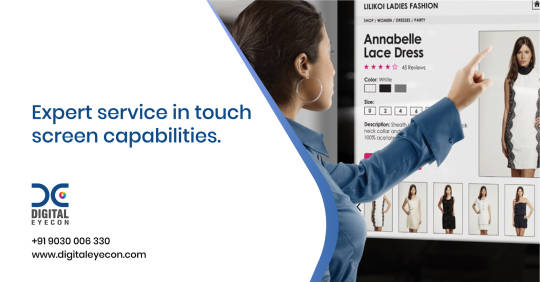
Interactive display apps have become necessary tools in various sectors from education to business. These devices create dynamic and user-friendly interfaces for effective engagement and communication. Digital Eyecon’s team of skilled developers combines technical expertise with a passion for innovation, ensuring the best solutions are in tune with industry trends. Digital Eyecon has left an indelible mark by delivering pioneering touchscreen applications and AR apps tailored for museums and tourist places. The remarkable success of these apps has brought positive feedback, solidifying Digital Eyecon’s position as the best interactive touchscreen display app development company.
As technology continues to evolve, Digital Eyecon brings the best of interactive experiences to diverse businesses and budget needs. With a track record of success, the company is a trusted partner for businesses seeking to elevate their visitor/audience experience through the latest technology. Check for more information at https://digitaleyecon.com/services/interactive-touchscreen-display-app-development-company/
youtube
Interactive touchscreen apps have revolutionized the way businesses engage with their customers. These apps are highly beneficial in creating dynamic experiences and providing a bridge between businesses and their target audience. Interactive touchscreens are all about creating an unforgettable experience that resonates with
the audience. So, choose a company that understands innovation and is committed to delivering the best so your business stands out in the digital landscape.
#interactive touchscreen#app development#web designing company in hyderabad#web designers in hyderabad#digital marketing company in hyderabad#Youtube
2 notes
·
View notes
Text
Experience Smart Living with Echo Show 10 (3rd Gen)
[et_pb_section fb_built=”1″ theme_builder_area=”post_content” _builder_version=”4.22.1″ _module_preset=”default”][et_pb_row _builder_version=”4.22.1″ _module_preset=”default” theme_builder_area=”post_content”][et_pb_column _builder_version=”4.22.1″ _module_preset=”default” type=”4_4″ theme_builder_area=”post_content”][et_pb_text _builder_version=”4.22.1″ _module_preset=”default”…
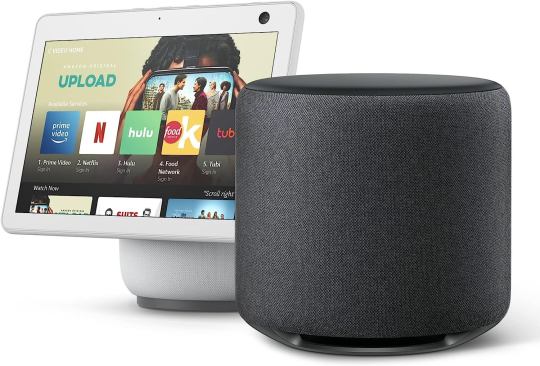
View On WordPress
#Adaptive motion tracking#Alexa&039;s latest features#Daily agenda updates#Entertainment center#Hands-free video calls#Home automation hub#Home monitoring#Home security#Interactive recipes#Interactive touchscreen#Kitchen companion#Music and audio control#Personalized news updates#Smart display#Smart home integration#Streaming content#Video surveillance#Voice-activated routines#Voice-controlled assistant#Weather updates
0 notes
Text

randomly thinking of my crosscode oc hal again
#crosscode#halda#or did i tag him as#hal#i forget#i forget if character interaction with menus is shown in-game in crosscode#but i like to think it works similar to how (long drawn out sigh) sword art online depicted it#ie. holographic touchscreen floating in front of the player#blank for anyone else looking at it unless they set it otherwise etc
18 notes
·
View notes
Text
aw man all the fun smt nocturne HD glitches are PC-exclusive. this is what i get for buying it on switch.
#but the fact that nocturne has menu storage and cutscene storage and OOB is so cool#and theres OOB debug objects you can interact with! i don’t think that was even documented on tcrf#so cool…#maybe if this stupid thing remembered it has a touchscreen the glitch setup would still work without a mouse but here we are#switch speaks
3 notes
·
View notes
Text
oh yeah mario has literally taken care of bowser's son so add that to the bowsario pile ig
#'taken care of' as far as the restrictive animations and interactions of the game would allow him to#but you get what i see when i say i see mario taking cover from fury bowser's flame seeing jr floating dangerously out of cover unable to#take his eyes off bowser and grabbing his hand to pull him behind the wall with him#which i WISH was something you could do so that i didn't keep having to watch him get roasted alive#sure it has no impact on him but it still sucked to watch#that's my goddamn son :(#now i'm thinking about it i coulda used the touchscreen to bring him into cover i didn't think about it before#anyway i love how mario went from pissed off to enthusiastic when bowser jr asked him to help him. omg his favourite activity :D
5 notes
·
View notes
Text
youtube
EPCOT Center's WorldKey Information System LaserDisc (1982)
WorldKey was a groundbreaking touchscreen digital information system created for EPCOT Center in 1982 by Bell Laboratories and Western Electric. WorldKey stations were featured at Spaceship Earth's Earth Station post-show area and at kiosks throughout the park. Video content highlighting the various pavilions was streamed over fiber optic cable from centrally located videodisc players, and guests could also connect via a live closed-circuit video system to Guest Relations hosts in order to make dining reservations or ask questions. The simple, touch-screen interface seemed sleek and futuristic, and was the first time that most EPCOT Center guests had probably experienced this now-commonplace technology. WorldKey utilized a high-tech combination of laserdisc technology, touchscreen monitors and computers. When making a selection, the laserdisc would 'jump' to another place on the disc, like skipping songs on a vinyl record or CD. The version presented here is the laserdisc played in a complete start-to-finish run (a method which guests would never see) and thus may seem to be a bit disorganized when presented in this manner. Because WorldKey utilized laserdisc technology, it became more difficult to update as EPCOT Center changed and expanded. Eventually, WorldKey's primary home at Earth Station would be removed for the AT&T Global Neighborhood in 1994 and the rest of the system was soon removed with it. Today, WorldKey is fondly remembered by those who experienced EPCOT Center's legendary first decades as an amazing hands-on, look at the technology of the future that is now commonplace in the reality of today.
#epcot#epcot center#worldkey#1980s#disney#disney parks#walt disney world#interactive#bell system#at&t#bell labs#1982#future world#the future!#touchscreen#youtube#laserdisc#videodisc#video
3 notes
·
View notes
Text
One of the many casualties in capitalism's war against simple, elegant, modular, well-designed machines is accessibility
Replacing physical buttons and controls with touchscreens also means removing accessibility features. Physical buttons can be textured or have Braille and can be located by touch and don't need to be pressed with a bare finger. Touchscreens usually require precise taps and hand-eye coordination for the same task.
Many point-of-sale machines now are essentially just a smartphone with a card reader attached and the interface. The control layout can change at a moment's notice and there are no physical boundaries between buttons. With a keypad-style machine, the buttons are always in the same place and can be located by touch, especially since the middle button has a raised ridge on it.
Buttons can also be located by touch without activating them, which enables a "locate then press" style of interaction which is not possible on touchscreens, where even light touches will register as presses and the buttons must be located visually rather than by touch.
When elevator or door controls are replaced by touch screens, will existing accessibility features be preserved, or will some people no longer be able to use those controls?
Who is allowed to control the physical world, and who is making that decision?
#screens also consume a lot more standby power#& are less modular#(thus are more expensive & inefficient to repair)#they have use cases certainly#(they're dynamic & the same one can be used for multiple interactions)#but unless you specifically need a touchscreen#you shouldn't use a touchscreen
49K notes
·
View notes
Text
Videoconference Solutions: An Interactive Flat Panel Approach to Transforming Collaboration by Vivency Technology LLC.
In today's fast-paced tech-driven world, good communication and collaboration have become the basics to success—be it in educational institutions or the corporate world. Vivency Technology LLC is leading the way in this transformation by offering state-of-the-art versatile Interactive Flat Panels —a game-changing solution for classrooms, training centers, and conference rooms.
These advanced digital displays are more than just a screen; they are a fully interactive platform that changes how people teach, learn, present, and engage with one another. With a variety of powerful features and a user-centric design, Vivency's IFPs are paving the way for smart collaboration and seamless video conferencing.
What We Offer
Interactive Touchscreen Experience
Vivency Technology, LLC, manufactures IFPs equipped with high-definition resolution touchscreens that provide smooth and intuitive-to-use high-tactile touch interactivity. Whether the teacher is explaining a concept, the student is solving a problem, or the corporate worker is displaying some data—the IFP allows a user to write, draw, and annotate directly on the screen with their finger or a stylus. Such interactivity turns passive sessions into dynamic and engaging experiences.
Multi-User Collaboration
If one feature sets our IFPs apart from others in the industry, it is the multi-user collaboration option. The IFPs recognize multiple touch points at the same time, allowing simultaneous interaction with the display by multiple users. In the classroom, this leads to student participation and group solving of problems. In the corporate world, team participation in brainstorming sessions, workshops, and collaborative presentations is promoted.
Custom Size Options for Every Setting
Vivency offers a range of IFP sizes from small panels for small classrooms or huddle rooms to very large panels for spaces like boardrooms or lecture halls. Because of this, no matter the room size or setup, any application needs can be fulfilled with Vivency IFP products.
Brilliant Visual Clarity in High Definition
When it comes to visual communication, clarity is important. Vivency IFPs come with world-class displays that render crisp, brilliant images, ensuring every presentation is graphically eye-catching. Some select models even provide 4K Ultra HD resolution so each detail gets its due attention, be it educational content displays, architectural design, or participants on a video call.
Built-in Connectivity for Seamless Integration
Our IFPs come with built-in connectivity options including HDMI, USB, and wireless, thereby ensuring easy connection with laptops, tablets, smartphones, and other peripherals. This yields smooth content sharing during meetings or classes without arduous setup, allowing attendees to concentrate on collaboration.
Integrated software that effuses power.
When preloaded onto Vivency IFPs, software applications become utilities for improving the experience of learning and communicating. These include whiteboarding, annotation, screen capture, multimedia playback, web browser, etc. With everything built in, users have the resources right at their fingertips and can hence make teaching and meetings more engaging and productive.
Durability You Can Trust
For everyday usage, the IFPs are made from premium, tough materials to withstand daily wear and tear. These panels are designed for longevity whether used in a busy classroom or a fast-paced boardroom. With great warranties offered, users can rest assured that they are making a safe investment with returns for many years.
Why Vivency Technology LLC?
Vivency Technology LLC is not a vendor; it is an esteemed partner in providing advanced video-conferencing solutions. Our Interactive Flat Panels are:
Highly interactive
Enhanced collaborative tools
Sizing options
Crystal-clear visibility
Plug-and-play
Smarter integrated software
Last forever
Whether you are an educator wishing to inspire students or a businessperson striving for efficient collaboration, Vivency’s Interactive Flat Panels Services in Dubai- this is the right choice to address modern-day communication demands.
#Video conference#Interactive panels#Flat panels#Smart boards#Conference displays#Digital screens#Touchscreen panels#AV solutions#Collaboration tools#Classroom technology#Display panels#Meeting solutions#Smart displays#Education tech#Office displays
0 notes
Text
Interactive metro display showing real-time route information in Chongqing’s MRT. 🚈
#Chongqing’s MRT#interactive displays#real-time route information#real-time#route information#MRT#train station#technology#china#train technology#touchscreen#transportation#transport system
0 notes
Text
The Potential of Interactive Whiteboards in Contemporary Workplaces and Classrooms

Technology has changed educational and professional settings dramatically in recent years. The interactive whiteboard is one of the tools driving this change that has had the greatest impact. Because they encourage greater engagement, collaboration, and a more dynamic learning or working experience, these devices have become an essential component of contemporary classrooms and workplaces. But what are interactive whiteboards and why are they receiving so much attention?
How do interactive whiteboards work?
A large, touch-sensitive display known as an interactive whiteboard lets users use a finger or stylus to control a computer directly from the screen. For a fully immersive experience, these devices can be connected to computers, projectors, and other technology systems. They are utilized for content presentation, writing, drawing, and real-time application interaction.
An engaging and adaptable platform is provided by interactive whiteboards, which take the place of conventional blackboards and projectors. Presenters, teachers, and meeting organizers can directly incorporate multimedia elements like videos, images, and websites into their presentations. This makes learning more fun and adapts to different learning styles.
Key Advantages of Interactive Whiteboards :
Increased Interaction and Engagement : One of the most significant advantages of interactive whiteboards is their capacity to increase engagement. Students and other participants can engage with the material rather than simply listening to it. They are able to work together on projects, respond to questions on the board, and actively engage with multimedia materials. The audience stays engaged and attentive as a result of this increased interaction, which improves comprehension and retention.
Supports a Wide Range of Learning Methods : Interactive whiteboards are a useful tool for accommodating a wide range of learning methods. Whether somebody is a visual student, hear-able student, or sensation student, the intuitive highlights of the whiteboard can address their issues. Visual students benefit from pictures and recordings, hear-able students can pay attention to sound parts or clarifications, and sensation students can collaborate with the whiteboard by truly captivating with the substance.
Collaboration Made Simple : Interactive whiteboards make it simple to work together with colleagues in a professional setting. Participants can use the board to share documents, share ideas, and even annotate presentations in real time, whether they are working in the same room or remotely. Not only does this collaborative approach save time, but it also guarantees that everyone will have an opportunity to participate.
Access to a World of Resources : With interactive whiteboards, educators and professionals have access to a vast array of digital resources. For instance, educational apps, videos, and interactive quizzes can be used by educators to keep students engaged. To create presentations that are more dynamic, professionals can incorporate data from spreadsheets, design software, and web content. Interactive whiteboards are a useful tool in any setting due to the plethora of resource options available to them.
Improved Learning Outcomes : The use of interactive whiteboards in education is linked to improved learning outcomes, according to numerous studies. When technology is used, students tend to be more motivated and willing to participate in lessons. Lessons that are interactive encourage active learning, which improves comprehension and knowledge retention.
Application in Various Environments :
Interactive whiteboards are revolutionizing the way teachers teach in the classroom. The days of static chalkboard notes are long gone. Teachers can incorporate videos, 3D models, and live websites into their lessons with the assistance of interactive whiteboards. Additionally, students can directly interact with the lesson by coming up to the board, giving them a more hands-on learning experience. Because the whiteboard is able to accommodate a variety of learning styles, no student will be left behind, making it an ideal tool for inclusive education.
Interactive whiteboards are becoming commonplace in meeting rooms and collaborative areas of businesses. They allow teams to collaborate on projects, share documents, and brainstorm ideas while also allowing them to annotate and alter data on the board itself. Through screen sharing and video conferencing, these boards also provide a collaborative environment for businesses that work from multiple locations or remotely.
Interactive whiteboards are also frequently used in workshops and training. By incorporating live polls, quizzes, and feedback sessions directly on the board, facilitators can provide a more immersive and engaging experience. This makes it possible for participants to actively engage with the material and better absorb it.
The Future of Interactive Whiteboards :
Interactive whiteboards are likely to get even more advanced as technology advances. These devices will be even more powerful thanks to the integration of artificial intelligence, improved user interfaces, and more connectivity options. In addition, the role of interactive whiteboards in connecting people across distances will only increase as hybrid work environments and remote learning become more common.
Conclusion, By providing a platform that encourages interaction, collaboration, and engagement, interactive whiteboards have redefined how we teach, learn, and work. These adaptable tools are paving the way for a more connected and dynamic future in classrooms, boardrooms, and training facilities. An investment in an interactive whiteboard will yield long-term benefits for anyone looking to improve their presentations, classes, or meetings.
0 notes
Text

https://embedtechsolutions.com/product/embedtech-et-ifp-75-interactive-flat-panel-display/ Upgrade Your Organization with EmbedTech’s Innovative Tech Solutions
Experience education on a grand scale with our 75-inch interactive flat panel display in India and USA. Explore unbeatable prices for immersive learning solutions
#interactive flat panel displays in india#iot solutions in india#ops system in hyderabad#video conferencing stand in hyderabad#65 inch digital display in hyderabad#65 inch touchscreen panel in hyderabad#65 inch interactive flat panel in india#interactive flat panel 65 inch in india#65 inch interactive whiteboard in india#75 inch digital display in india#75 inch touchscreen panel in india#86 inch interactive flat panel in india#interactive flat panel 86 inch in india
0 notes
Text
Enhance Engagement with Polycom Interactive Display Solutions
Discover how Polycom interactive display solutions foster engagement and collaboration, with AV integration support from Radiant Info Solutions.

#Polycom interactive displays#touchscreen technology#digital collaboration tools#Polycom products#interactive presentations
0 notes
Link
Optoma's range of DLP home & business projectors, interactive flat panel displays, LED displays, projection screens & accessories.
#home projector installation#lightform projector#3d hologram led fan#floor rising alr projection screen#projection mapping companies near me#touchscreen projector#professional hologram projector#house projection mapping#3d projection#interactive wall projector
0 notes
Text
Revolutionizing Workflows: Unleashing the Power of iPlanTables' Interactive Touch Screen Solutions
Dive into the future of productivity with iPlanTables' cutting-edge interactive touch screen solutions. In this blog, Kevin Rowe explores how large 4k touch screen monitors are transforming traditional workflows, offering unprecedented efficiency and collaboration in industries like construction, architecture, and education. Discover the benefits of electronic markup, clear structure overviews, and the seamless integration of interactive touch screens in various professional environments. Join us on a journey to digitize your organization, improve decision-making, and elevate user experiences with the latest in touchscreen workstation technology.
0 notes
Note
pokedex designs review?? :3c
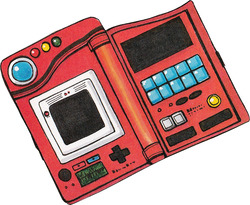
Kanto: Not bad, I like the flip motion and the way the cover tucks into the top part when closed. It feels like it has a LOT of unneeded buttons though.
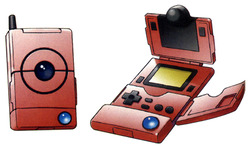
Johto: It folding up into an old-style phone is neat, but the way it unfolds seems very cumbersome to actually use.
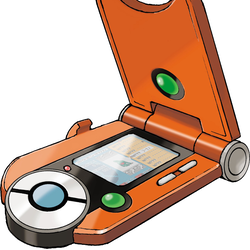
Hoenn: The it sits sideways instead of vertically is a bit weird, but I like the simple practicality of this one a lot, especially the big Pokeball-style button at the top.

Sinnoh: Not entirely sure what the right-hand thing is (scanner?), but once again points for practicality here, even if I like the Hoenn one better from an aesthetic standpoint.
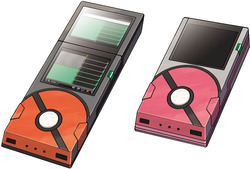
Unova: I hate the fact that these are gendered. Also, not only does the gendering not make sense (why does the "male" on have two screens??? actually these might just be showing them open and closed respectively) but it's hard to figure out how these even work as there's no buttons but it doesn't really seem to be a touchscreen either.
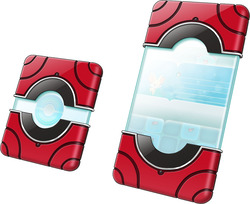
Kalos: This one seems to break the laws of physics so points off for that, but I think the touchscreen phone thing combined with a nice sliding cover is a cool concept, and I like the Pokeball design and the futuristic look.

Alola: Rotom Dex as a character aside, I'm not a big fan of this design because it's hard to figure out how it functions; like, on the other designs you get a feel for how you could pick them up and use them, whereas here that's not really the case. I'm not even sure I would guess this was a Pokedex if there wasn't context attached to it.


Galar/Paldea: Grouping these together because they're basically the same design. I like this better than the SuMo Rotom Dex because these are just phones; it's easy to see how you can use them. However, having the Pokedex as an app rather than a separate device is kind of underwhelming? Like it makes a lot of logical sense, but it also makes it feel less important. If it was a phone but had some cool Pokemon-esq design to it and some more interactivity like the Kalos dex I think that would be a happy compromise. Also, having basically the same design for two gens is disappointing.
#also yes I am aware most of these are styled after consoles and while that's a nice touch I don't think it matters much beyond that#pokemon#pokedex#ask#Anonymous#pokemon reviews#? guess this counts sure
102 notes
·
View notes
Note
Hello! First, I wanted to say thank you for your post about updating software and such. I really appreciated your perspective as someone with ADHD. The way you described your experiences with software frustration was IDENTICAL to my experience, so your post made a lot of sense to me.
Second, (and I hope my question isn't bothering you lol) would you mind explaining why it's important to update/adopt the new software? Like, why isn't there an option that doesn't involve constantly adopting new things? I understand why they'd need to fix stuff like functional bugs/make it compatible with new tech, but is it really necessary to change the user side of things as well?
Sorry if those are stupid questions or they're A Lot for a tumblr rando to ask, I'd just really like to understand because I think it would make it easier to get myself to adopt new stuff if I understand why it's necessary, and the other folks I know that know about computers don't really seem to understand the experience.
Thank you so much again for sharing your wisdom!!
A huge part of it is changing technologies and changing norms; I brought up Windows 8 in that other post and Win8 is a *great* example of user experience changing to match hardware, just in a situation that was an enormous mismatch with the market.
Win8's much-beloathed tiles came about because Microsoft seemed to be anticipating a massive pivot to tablet PCs in nearly all applications. The welcome screen was designed to be friendly to people who were using handheld touchscreens who could tap through various options, and it was meant to require more scrolling and less use of a keyboard.
But most people who the operating system went out to *didn't* have touchscreen tablets or laptops, they had a desktop computer with a mouse and a keyboard.
When that was released, it was Microsoft attempting to keep up with (or anticipate) market trends - they wanted something that was like "the iPad for Microsoft" so Windows 8 was meant to go with Microsoft Surface tablets.
We spent the first month of Win8's launch making it look like Windows 7 for our customers.
You can see the same thing with the centered taskbar on Windows 11; that's very clearly supposed to mimic the dock on apple computers (only you can't pin it anywhere but the bottom of the screen, which sucks).
Some of the visual changes are just trends and various companies trying to keep up with one another.
With software like Adobe I think it's probably based on customer data. The tool layout and the menu dropdowns are likely based on what people are actually looking for, and change based on what other tools people are using. That's likely true for most programs you use - the menu bar at the top of the screen in Word is populated with the options that people use the most; if a function you used to click on all the time is now buried, there's a possibility that people use it less these days for any number of reasons. (I'm currently being driven mildly insane by Teams moving the "attach file" button under a "more" menu instead of as an icon next to the "send message" button, and what this tells me is either that more users are putting emojis in their messages than attachments, or microsoft WANTS people to put more emojis than messages in their attachments).
But focusing on the operating system, since that's the big one:
The thing about OSs is that you interact with them so frequently that any little change seems massive and you get REALLY frustrated when you have to deal with that, but version-to-version most OSs don't change all that much visually and they also don't get released all that frequently. I've been working with windows machines for twelve years and in that time the only OSs that Microsoft has released were 8, 10, and 11. That's only about one OS every four years, which just is not that many. There was a big visual change in the interface between 7 and 8 (and 8 and 8.1, which is more of a 'panicked backing away' than a full release), but otherwise, realistically, Windows 11 still looks a lot like XP.
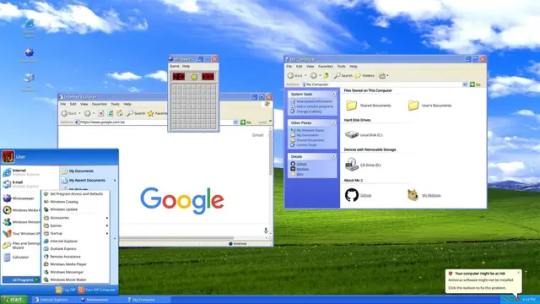

The second one is a screenshot of my actual computer. The only change I've made to the display is to pin the taskbar to the left side instead of keeping it centered and to fuck around a bit with the colors in the display customization. I haven't added any plugins or tools to get it to look different.
This is actually a pretty good demonstration of things changing based on user behavior too - XP didn't come with a search field in the task bar or the start menu, but later versions of Windows OSs did, because users had gotten used to searching things more in their phones and browsers, so then they learned to search things on their computers.
There are definitely nefarious reasons that software manufacturers change their interfaces. Microsoft has included ads in home versions of their OS and pushed searches through the Microsoft store since Windows 10, as one example. That's shitty and I think it's worthwhile to find the time to shut that down (and to kill various assistants and background tools and stop a lot of stuff that runs at startup).
But if you didn't have any changes, you wouldn't have any changes. I think it's handy to have a search field in the taskbar. I find "settings" (which is newer than control panel) easier to navigate than "control panel." Some of the stuff that got added over time is *good* from a user perspective - you can see that there's a little stopwatch pinned at the bottom of my screen; that's a tool I use daily that wasn't included in previous versions of the OS. I'm glad it got added, even if I'm kind of bummed that my Windows OS doesn't come with Spider Solitaire anymore.
One thing that's helpful to think about when considering software is that nobody *wants* to make clunky, unusable software. People want their software to run well, with few problems, and they want users to like it so that they don't call corporate and kick up a fuss.
When you see these kinds of changes to the user experience, it often reflects something that *you* may not want, but that is desirable to a *LOT* of other people. The primary example I can think of here is trackpad scrolling direction; at some point it became common for trackpads to scroll in the opposite direction that they used to; now the default direction is the one that feels wrong to me, because I grew up scrolling with a mouse, not a screen. People who grew up scrolling on a screen seem to feel that the new direction is a lot more intuitive, so it's the default. Thankfully, that's a setting that's easy to change, so it's a change that I make every time I come across it, but the change was made for a sensible reason, even if that reason was opaque to me at the time I stumbled across it and continues to irritate me to this day.
I don't know. I don't want to defend Windows all that much here because I fucking hate Microsoft and definitely prefer using Linux when I'm not at work or using programs that I don't have on Linux. But the thing is that you'll see changes with Linux releases as well.
I wouldn't mind finding a tool that made my desktop look 100% like Windows 95, that would be fun. But we'd probably all be really frustrated if there hadn't been any interface improvements changes since MS-DOS (and people have DEFINITELY been complaining about UX changes at least since then).
Like, I talk about this in terms of backward compatibility sometimes. A lot of people are frustrated that their old computers can't run new software well, and that new computers use so many resources. But the flipside of that is that pretty much nobody wants mobile internet to work the way that it did in 2004 or computers to act the way they did in 1984.
Like. People don't think about it much these days but the "windows" of the Windows Operating system represented a massive change to how people interacted with their computers that plenty of people hated and found unintuitive.
(also take some time to think about the little changes that have happened that you've appreciated or maybe didn't even notice. I used to hate the squiggly line under misspelled words but now I see the utility. Predictive text seems like new technology to me but it's really handy for a lot of people. Right clicking is a UX innovation. Sometimes you have to take the centered task bar in exchange for the built-in timer deck; sometimes you have to lose color-coded files in exchange for a right click.)
296 notes
·
View notes